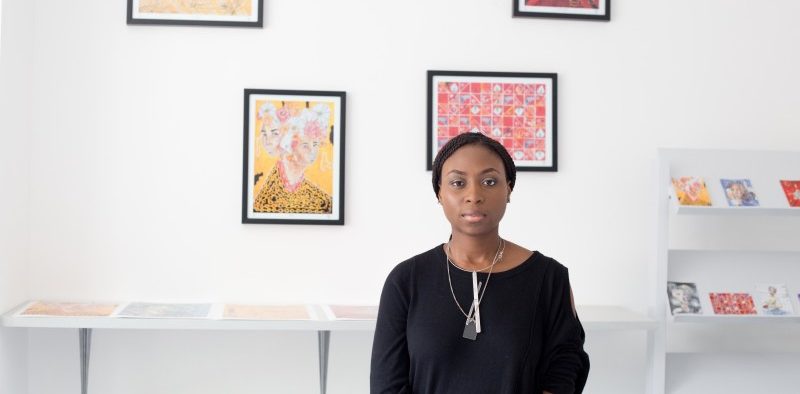A moment at Mode gallery
Share


Modé believes that one must search deep within, to create something unique
FUNKE OSAE-BROWN
Driving into Olumo Road, Parkview Estate, Ikoyi on a slightly windy Monday morning in June leads me into a remarkable view. Located on this road is the Mode Gallery of art the brain child of Modebolu Aderinokun, the daughter of late Guaranty Trust Bank managing director, Tayo Aderinokun.
Modebolu who describes herself as a multidimensional artist tells me the gallery is an arm of The Studio Of Modé, a company she officially established in 2012. According to her, the idea behind the company is to create a space where the voice of a creative with various skills can be clearly heard and understood. She wants to create a place where creativity can connect and integrate with modern day society in an expressive, intellectual manner, without necessarily losing her creative aesthetic.
She was born in Lagos, where she attended the famous St. Saviors Primary School, Ikoyi, and then travelled to study at the British School of Lome, Togo at the age of 10. Five years later she went on to Marymount International School, Surrey where she completed her A –Levels. She then attended the Academy of Arts University, San Francisco where she studied Animation.
Mode credits her time in San Francisco as the main reason behind her becoming an artist. “Being constantly surrounded by Art in San Francisco really inspired me to start painting again, I dropped it a while back because I didn’t see a possible career path,” she recalls. After her graduation, she spent a year working at the Cartoon Arts Museum in San Francisco; she then moved back to Lagos, Nigeria where she started pursuing her dream of becoming an artist.
Since the creation, the company has grown from the founder creating her works in a bedroom to building a studio and having her work highly celebrated with her works in the hands of hundreds of collectors.
Hence it was with joy she took me on a tour of her new studio billed to be formerly opened to the public on Sunday June 14. It is not a surprise that she dedicates the studio to the memory of her late father who was a great art patron. She says she is deeply inspired by creation. She believes that in order to attain fulfillment, she must create pieces that enrich the lives of others. When something that fills a void is created, society becomes healthier.
“I believe in art integrating into the society,” she explains. “I really like portraits. What inspires me is thought; the thought of creating something new, though provoking pieces that engage the mind.”
Modé believes that one must search deep within, to create something unique. In defining this space, she has drawn heavily on her Nigerian origin, in fusion with her experiences from travelling and living in the West.
She explains that the character of the new building that now houses her studio is derived from the city of Lagos. “Lagos has a harsh, forceful, yet conflicted presence that leaves a mark on anyone who comes in contact with the city. There are many places in Lagos that are very clean, but unkempt. Some roads are smooth and well-maintained, while others are barely passable. The ultra-rich and the extremely poor coexist in Lagos. It is a city of extremes,” she says.

Modebolu is a multidimensional artist
According to her the white colour of the outer part of the building is an interpretation of Lagos as a city that is bright, pristine, and immaculate. “While you explore the space, you will encounter dynamic colours and materials that have been used to evoke the feeling of being in a space that is Nigerian,” she adds.
She explains further that the interior of the build mimic the ancient city of Abeokuta, Ogun state. It is a drastic change from the outer white to interior terra cotta colour mimics the characteristic recklessness of Lagos, which takes visitors to the gallery into a different world. “Abeokuta, a Yoruba city in Ogun state, is known for its many monumental rocks. Its name literally means “under the rock,” she says.
A tour of the gallery reveals a depiction of country like Nigeria that is still largely influenced by its colonial past. This recourse to the past is visible in the minimalism of the space and the oneness of the colour of the floor, ceiling, and walls. The artist questions the need to replicate the typical white space that is used in galleries in the West. She believes that the white space creates distance, and prefers for art to be an intimate experience between the viewer and the work. To achieve this experience, she has created an environment that evokes the earthy feeling of Abeokuta. The terra cotta colour brings warmth to the space and the rough texture of the walls makes one feel they are in fact “under the rock”.













